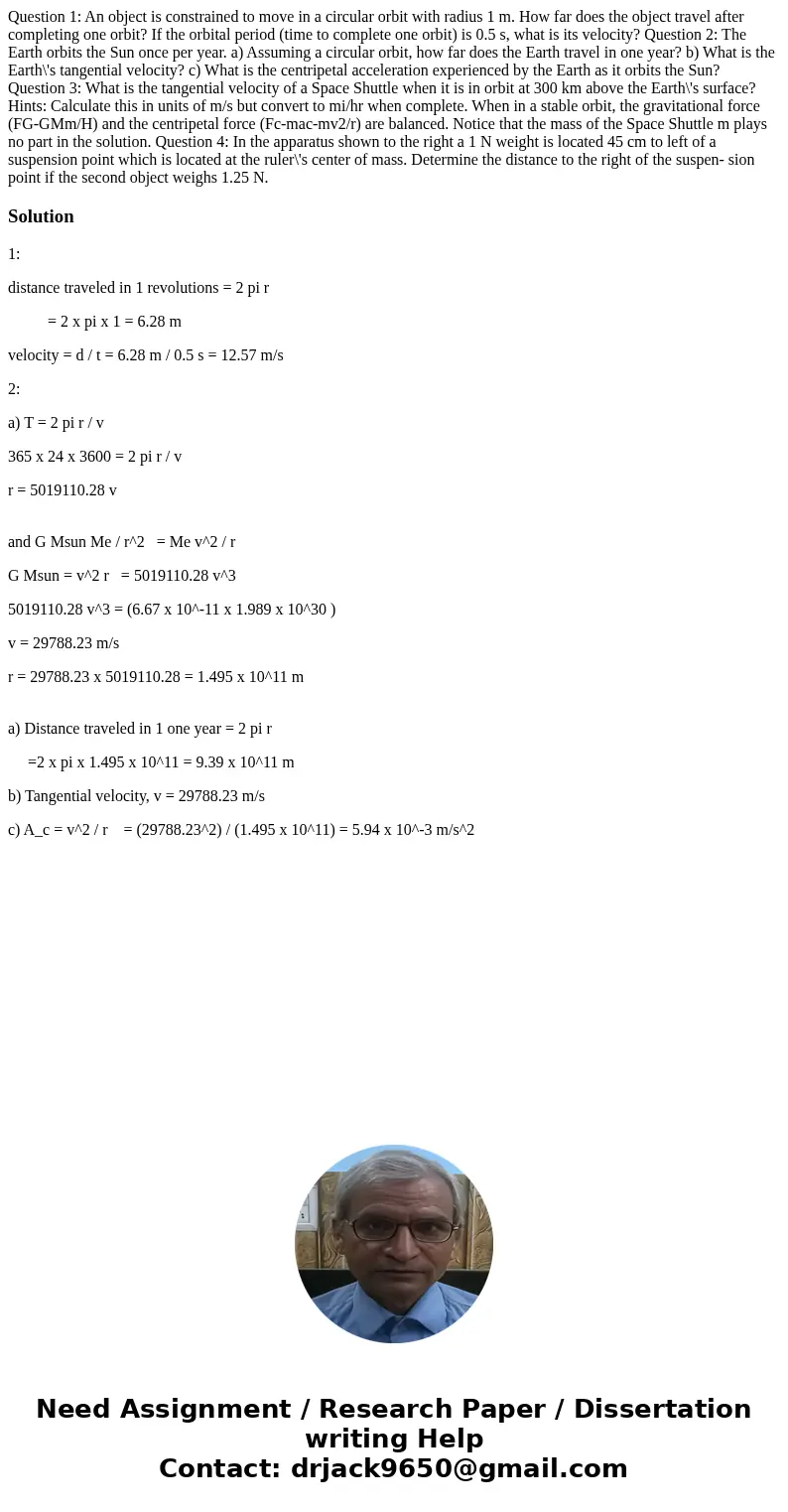Question 1 An object is constrained to move in a circular or
Question 1: An object is constrained to move in a circular orbit with radius 1 m. How far does the object travel after completing one orbit? If the orbital period (time to complete one orbit) is 0.5 s, what is its velocity? Question 2: The Earth orbits the Sun once per year. a) Assuming a circular orbit, how far does the Earth travel in one year? b) What is the Earth\'s tangential velocity? c) What is the centripetal acceleration experienced by the Earth as it orbits the Sun? Question 3: What is the tangential velocity of a Space Shuttle when it is in orbit at 300 km above the Earth\'s surface? Hints: Calculate this in units of m/s but convert to mi/hr when complete. When in a stable orbit, the gravitational force (FG-GMm/H) and the centripetal force (Fc-mac-mv2/r) are balanced. Notice that the mass of the Space Shuttle m plays no part in the solution. Question 4: In the apparatus shown to the right a 1 N weight is located 45 cm to left of a suspension point which is located at the ruler\'s center of mass. Determine the distance to the right of the suspen- sion point if the second object weighs 1.25 N. 
Solution
1:
distance traveled in 1 revolutions = 2 pi r
= 2 x pi x 1 = 6.28 m
velocity = d / t = 6.28 m / 0.5 s = 12.57 m/s
2:
a) T = 2 pi r / v
365 x 24 x 3600 = 2 pi r / v
r = 5019110.28 v
and G Msun Me / r^2 = Me v^2 / r
G Msun = v^2 r = 5019110.28 v^3
5019110.28 v^3 = (6.67 x 10^-11 x 1.989 x 10^30 )
v = 29788.23 m/s
r = 29788.23 x 5019110.28 = 1.495 x 10^11 m
a) Distance traveled in 1 one year = 2 pi r
=2 x pi x 1.495 x 10^11 = 9.39 x 10^11 m
b) Tangential velocity, v = 29788.23 m/s
c) A_c = v^2 / r = (29788.23^2) / (1.495 x 10^11) = 5.94 x 10^-3 m/s^2

 Homework Sourse
Homework Sourse